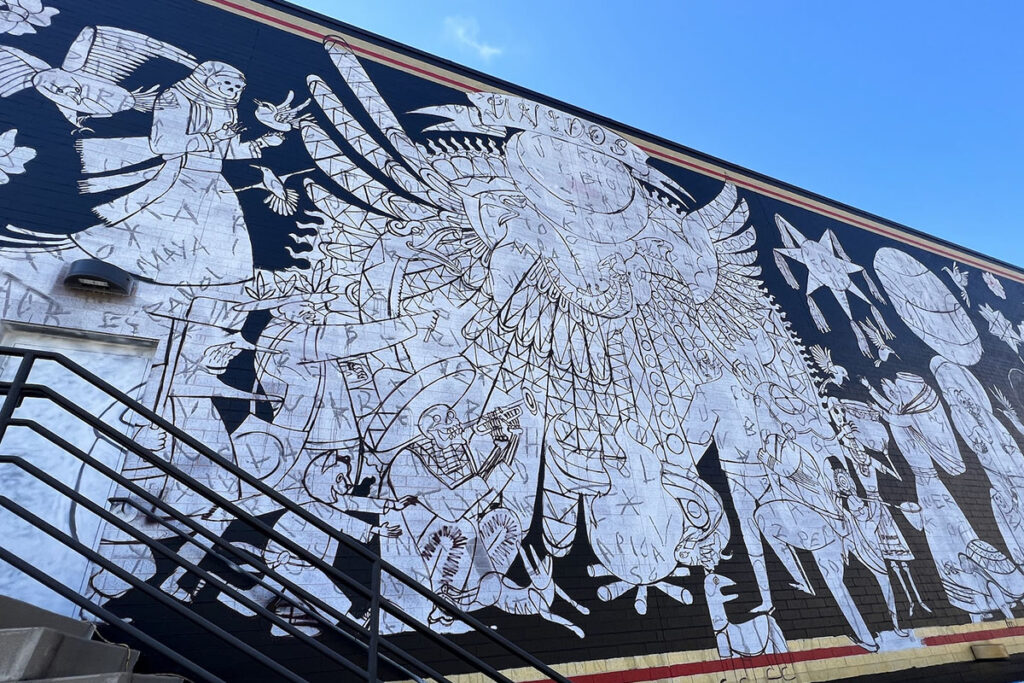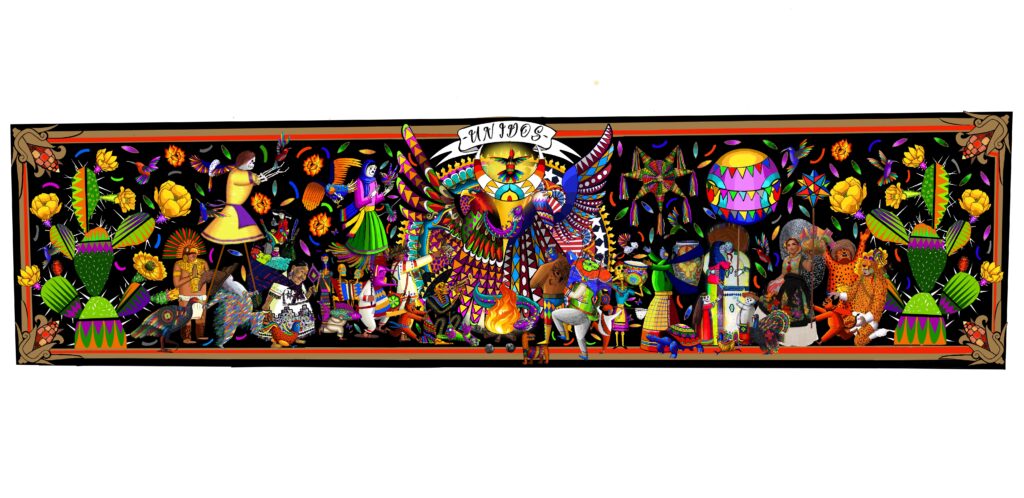
Jesús Sánchez Meleán
Haga click aquí para leer la versión en español
In the heart of Denver’s Auraria Campus, a vibrant mural has emerged, celebrating the enduring friendship between the United States and Mexico. This remarkable piece of art, crafted by the talented Mexican artist Israel Guerra Romero, known as “Spike,” has traversed a complex journey that raises significant questions about identity, history, and the perils of censorship.
For those in the community with Mexican roots, the mural is a source of pride, a powerful reminder of their heritage, and a symbol of cultural unity. For others not linked to Mexican heritage, it represents an opportunity to explore and appreciate a different culture. However, the mural’s creation was not without controversy, and its recent censorship by the Auraria Higher Education Center (AHEC) is a deeply troubling development.
Initially, the mural was envisioned to depict Benito Juárez and Abraham Lincoln, two historical figures, shaking hands in a gesture of friendship. This portrayal was intended to symbolize the enduring relationship between the United States and Mexico. However, AHEC decided to exclude Lincoln’s image from the mural, citing historical criticisms related to Native American populations and episodes of displacement.

Abraham Lincoln censored
While it is essential to recognize the historical context and actions of figures like Abraham Lincoln, it is equally crucial to avoid the trap of viewing the past through the lens of the present. It is inappropriate to judge historical figures solely by today’s standards, as the complexities of their times and era may not align with our contemporary values.
Abraham Lincoln, one of America’s most revered presidents, is not immune to scrutiny regarding some of his actions, including the signing of the 1862 Homestead Act and the Pacific Railroad Act. These actions have been associated with broken promises made to Native Nations and the near genocide and forced displacement of the Arapahoe and Cheyenne Nations from their ancestral lands. While these events are undeniably regrettable, it is essential to understand them within the context of their time.
The decision to censor Abraham Lincoln’s image from the mural sends a troubling message about this society’s willingness to engage with complex historical narratives. Censorship, in this case, denies the opportunity for critical dialogue and a more profound understanding of the past. It discourages the exploration of historical nuances, making it impossible to recognize that individuals, even those revered in history, had their own set of challenges and circumstances to overcome.
While we must acknowledge the stark historical realities and long-lasting implications of Abraham Lincoln’s actions, we should refrain from passing judgment solely based on contemporary standards. The censorship of his image from this mural is a stark reminder of the dangers of applying modern sensibilities to historical figures without a nuanced understanding of their times. It is a call to engage in meaningful discussions about history, its complexities, and the lessons it can offer, rather than silencing the past for the sake of present-day sensibilities.
Sketch by Jose Guerra Romero, “Spike”.







otras noticias
Hello Catira! Venezuelan flavor with soul
Colorado Rush invites kids to play, grow, and dream
Innovative plan at Adams 14 school gets green light